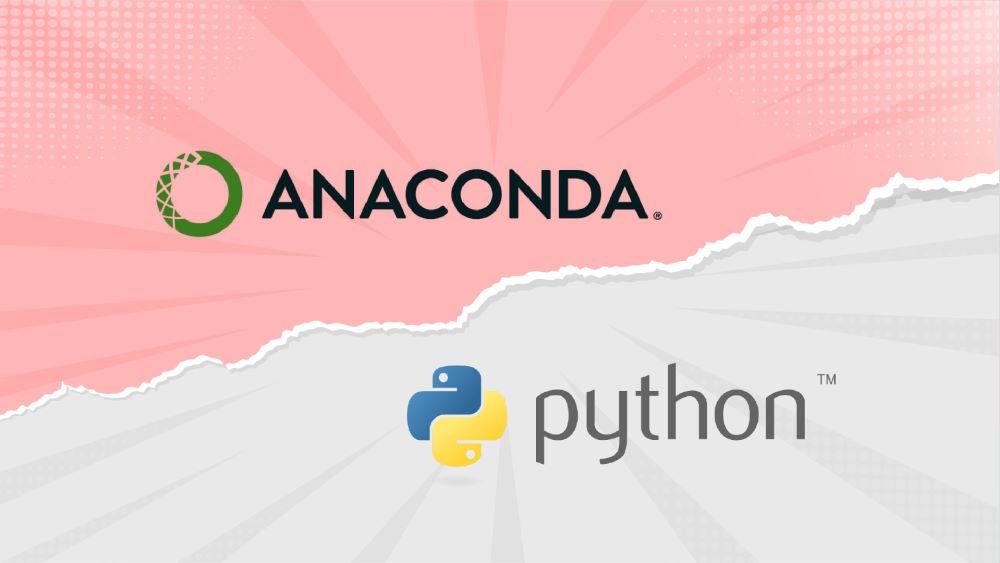This Is the Answer to “How Is Python Used in Finance?”

Content Map
More chaptersThe 4.0 revolution at the gate has brought in technological advancements and made them an integral part of the business realm regardless of fields or industries. In the global race for technological superiority, the financial sphere is not excluded. Today’s financial world has become data-driven and highly automated as a result of banks, investment firms, insurance companies, and other financial institutions relying heavily on the latest technologies and software.
Python is the leading language for programming and automation, which is one of the technological advances widely employed in the financial industry. As such, we will explore all those practical applications in this post.
The Basics of Python Programming Language

Initially, Python programming language was a side project conducted by Guido van Rossum in the 1980s. The programming language was officially implemented in 1991. Since its launch, it has grown and become one of the most in-demand programming languages (according to the PYPL). Notably, it is simple and flexible Python code that makes it the most popular programming language for beginners.
By definition, Python is a high-level, object-oriented, and open-source programming language that can be utilized for various development purposes (widely used in web development, custom software development, mathematical calculations, system scripting, data science, AI and machine learning, and heaps more). Not only popular, but Python is also considered one of the fastest programming languages, one of the future-proof coding langs, and the most efficient language for prototyping.
What Makes Python But Not Other Programming Languages Ideal for Finance Projects?
The advantages of Python’s features set it apart from other popular programming languages:
- Firstly, when Python was first conceived, it was aimed at creating a language that would streamline the coding processes and alleviate the programming barrier for beginners or non-coders. Therefore, Python has a clean and straightforward syntax that emphasizes readability - making it easy to write and understand codes. This high-level programming language is also highly extensible and portable, meaning that codes written using this language can be readily executed across multiple platforms, including Windows, macOS, Linux, and Unix. Python code is often three to five times shorter than Java or C++ language codes, which greatly simplifies the coding process.
- Secondly, Python comes with a plethora of pre-built modules and libraries, which eliminates the need to write much code from scratch, especially when developing large-scale applications. Python libraries include TensorFlow (for machine learning), NumPy (for scientific computing), and Django (for web development). Also, it offers powerful debugging tools and automated testing frameworks which can help developers to detect any errors in the code and rectify them quickly.
- Thirdly, Python programming language supports multiple paradigms, including object-oriented, aspect-oriented, procedural, and functional programming. This feature provides developers with the flexibility to choose any coding style that best fits their project requirements.
- Also, Python is an interpreted coding language, which means that a programmer can execute code line by line instead of going through the entire coding process. This makes debugging easier and faster than most other programming languages.
- Last but not least, Python is an open-source language, so developers can benefit from the continuous work of its user community and access a host of free libraries.
How Python Can Empower Financial Institutions

Trusted by large corporations, such as Google, Dropbox, and Instagram, Python development language has been well-received in the financial sector. In the last decade, Python has become a go-to language for financial institutions – from global banks to fintech startups – due to its scalability, versatility, and convenience. The applications of Python for finance are vast and ever-growing. These are some of the particular areas in that Python can be used:
Algorithmic Trading
Known as automated trading, it is a method of executing trades on various financial instruments, such as stocks, bonds, currencies, and commodities, using pre-programmed instructions and algorithms. These algorithms are designed to make decisions based on various factors such as market data, price movements, and timing. The primary goal of algorithmic trading is to minimize human intervention, reduce trading costs, and increase the efficiency and execution speed of financial transactions.
Python has become the de facto programming language used to design and implement algorithmic trading strategies and systems, allowing financial services providers to automate their trading activities. Using Python, developers can build automated-trading bots that analyze the market data in real-time and make trading decisions based on pre-set algorithms.
Python libraries such as NumPy, Pandas, and Scikit-learn offer machine-learning algorithms that can enable predictive analytics in the financial markets. Furthermore, Python-based backtesting platforms can help traders in evaluating their trading strategies before implementing them in real-time trading.
Financial Data Analysis & Data Visualization
Data is the source of knowledge and insight in every industry, and in the finance sector, it makes no difference. When owning the power to analyze financial data and convert it into actionable insights, one gains a competitive edge. And in order to do that, data analysis and visualization must be made possible.
Overall, data analysis refers to the systematic examination in which import financial data from various sources, such as balance sheets, income statements, cash flow statements, and other financial reports. The financial analysis process involves quantitative and qualitative analysis:
- Quantitative Analysis: Refers to the examination of numerical data, typically collected through surveys, experiments, or observations. It focuses on measuring variables, identifying patterns, and establishing relationships between them using statistical techniques. Quantitative finance analysis helps in making data-driven decisions, validating hypotheses, and predicting future trends.
- Qualitative Analysis: Deals with non-numerical data, such as text, images, or audio recordings, often gathered through interviews, focus groups, or case studies. It aims to understand the underlying meaning, context, and experiences behind the data. Qualitative analysis helps in generating insights, exploring new ideas, and understanding complex phenomena from a human perspective. In the financial services industry, this term refers to the process of evaluating non-quantifiable factors that can influence a company’s performance, its stock price, or the overall market. The purpose is to gain an in-depth understanding of an organization’s inner Strengths, Weaknesses, Opportunities, and Threats (SWOT) to make informed investment decisions.
The goal of financial analysis in overall is to identify patterns, trends, and relationships within the data to support decision-making and forecasting.
Meanwhile, data visualization is the graphical representation of data using visual components like charts, graphs, and maps. As its name suggests, this act is aimed at showcasing complex financial data in an easily digestible format in order to identify patterns, trends, and relationships that may not be visible in raw data. The ultimate goal of these two together is to assess and drive the most value of data assets.
What is the role of Python in finance at this point? Thanks to the Python data science ecosystem, financial analysts are offered powerful and easy-to-use tools for data processing, such as Pandas, NumPy, SciPy, IPython Notebook (Jupyter), and Matplotlib. It provides developers with the ability to process large datasets quickly and efficiently. Python simplifies the process of gathering, cleaning, and preparing data for further analysis. It also allows developers to access and extract data from multi-sources, such as databases, web services, APIs, and Excel spreadsheets.
Risk Management
Managing risks, which is essential in the financial services industry, refers to an organization’s strategies and processes for identifying, assessing, and responding to threats. And Python is the preferred language implemented in the development process of robust risk-management systems that help financial organizations identify potential threats, create a response plan, and anticipate the outcomes of their decisions.
Python libraries such as SciPy provide the necessary tools and algorithms for risk modeling, while their sophisticated machine-learning algorithms can be employed to identify and predict fraudulent activities. Python’s rich data analysis capabilities are also useful in assessing credit risk, calculating volatility, and running Monte Carlo simulations.
Portfolio Management and Optimization
Python-based solutions are also employed to optimize portfolios by constructing efficient frontiers and selecting assets that minimize risks while maximizing returns. The process of portfolio optimization can be complex, but with Python’s powerful libraries, it becomes much easier to build and analyze portfolios. In specific, libraries such as PyPortfolioOpt and cvxpy help in creating efficient frontiers and calculating optimal asset allocations. Python’s machine learning algorithms can also be used to identify long/short-term investment opportunities and predict future trends in the stock market.
Automation and Streamlining Processes
Python is also used to automate redundant and manual tasks within the financial sector. It offers APIs and libraries that enable developers to develop automated processes for data retrieval, analysis, report generation, payment processing, customer support systems, and other cumbersome tasks. The development of web applications and services has also been greatly simplified thanks to the versatile nature of Python.
Software Development for Financial Services
Python is an ideal coding language utilized for creating secure and scalable online banking solutions. Not only online but also ATM software, payment gateways, financial planning software, stock market trading platforms, and more can be developed using this dynamically typed language. Financial services providers can leverage Python to build any powerful software application and mobile banking platform to manage their day-to-day operations or meet their unique business needs. This includes developing automated customer care systems, designing intelligent search engines, and creating analytics dashboards for real-time monitoring of market trends.
The Bottom Lines
Reality proves that Python is one of the most popular programming languages. It is Python’s clear programming syntax, extensive libraries, and powerful debugging tools that make it an ideal choice for development projects in different fields, including finance. Python’s expansive use cases in finance have been greatly beneficial to the industry by streamlining processes, analyzing data, optimizing portfolios, automating tasks, and building sophisticated software solutions. Therefore, its demand is expected to remain strong for years to come.
Nowadays, businesses have their respective reasons for choosing this language over others for their development projects, and they also have their own motives to outsource Python development services to a reliable software development company. The right experts will help you build the best-in-class software applications and websites that meet the demands of your users.
Thus, if you are looking for an appropriate technology that can drive digital transformation in finance, look no further than Orient Software, as we provide a broad range of development services tailored to suit your needs, including Python. Contact us today.







